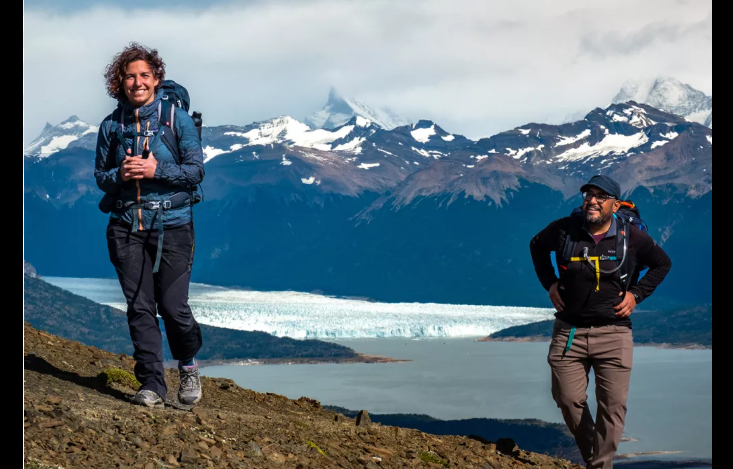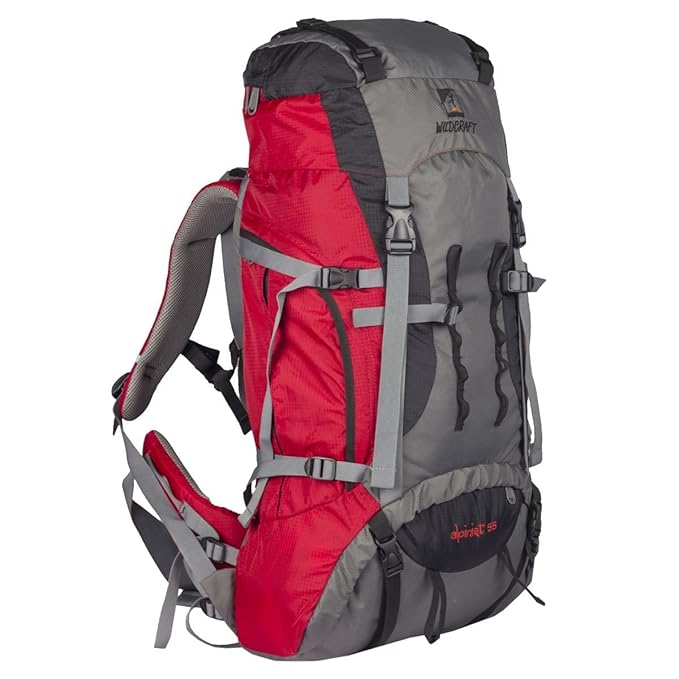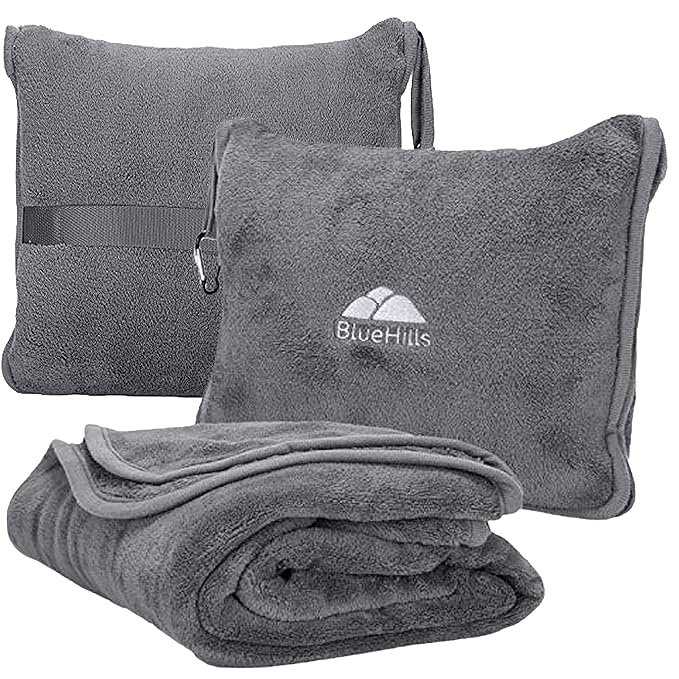Why Patagonia Is a Must-Visit for Adventurers
Patagonia’s landscapes are strikingly unique, with granite peaks that pierce the sky, glaciers that shimmer under the sun, and glacial-fed lakes that exhibit unreal shades of blue and teal. This region is wild, remote, and incredibly scenic, with natural wonders that rival the beauty of any other place on Earth. The experiences you can have here—from hiking world-renowned trails to kayaking among icebergs—make Patagonia a bucket-list destination for adventurers.
Highlights of Patagonia:
- The W-Trek in Torres del Paine National Park, Chile: Known as one of the world’s most beautiful hikes, the W-Trek takes you through lush valleys, across glacial rivers, and alongside towering granite peaks.
- Grey Lake and Grey Glacier: This area offers breathtaking views of icebergs and an opportunity to kayak around the glacier, giving you an up-close look at the icy beauty.
- Perito Moreno Glacier, Argentina: A massive, actively moving glacier that captivates visitors with its thunderous ice breaks and stunning blue hues.
- Gateway Cities: Explore the charming towns of Puerto Natales, Punta Arenas, El Chaltén, and El Calafate for local cuisine, unique cultural experiences, and a chance to unwind before or after your hikes.
The W-Trek: A Hiker’s Dream
The W-Trek, located in Chile’s Torres del Paine National Park, is one of the most iconic hiking routes in the world. This multi-day trek spans around 80 kilometers and takes hikers through some of the most dramatic landscapes Patagonia has to offer.
Highlights Along the W-Trek
- The Base of the Towers: A challenging hike that rewards you with a stunning view of the three granite towers for which the park is named.
- The French Valley: Known for its impressive rock formations, hanging glaciers, and views of the Paine Massif, this section of the trek is a favorite for many.
- Grey Lake: The trek’s final stretch leads to Grey Lake, where you can admire icebergs floating against a backdrop of jagged mountains and the mighty Grey Glacier.
Tips for Hiking the W-Trek
- Physical Preparation: The W-Trek is moderately challenging with some steep ascents and long distances, so being in good physical shape is essential.
- Book in Advance: Campsites and lodges fill up quickly, so it’s crucial to reserve your accommodations several months ahead.
- Pack for All Weather: Patagonia’s weather is famously unpredictable, so bring layers, including waterproof jackets and sturdy boots.
- Stay Hydrated and Nourished: Bring snacks and stay hydrated, as water sources are limited in some sections.
Kayaking Around Icebergs in Grey Lake
Grey Lake, located in Torres del Paine, is famous for its glacial icebergs that break off from the Grey Glacier. Kayaking around these icebergs provides a unique and awe-inspiring experience as you paddle through surreal, icy waters.
Tips for Kayaking in Grey Lake
- Dress Warmly: Even on a sunny day, the glacial waters are cold, so dress in layers and wear waterproof gear.
- Choose a Guided Tour: Local guides are knowledgeable about the lake’s currents and can help you navigate around icebergs safely.
- Respect the Glacier: Keep a safe distance from the glacier and icebergs, as they can shift or break apart unexpectedly.
Biking Adventures on the Argentinian Side: Exploring El Chaltén
After completing our hikes in Chile, we ventured to Argentina for some amazing biking experiences around El Chaltén, known as the trekking capital of Argentina. El Chaltén offers an incredible landscape of open fields, rugged terrain, and scenic mountain views that are ideal for biking.
Highlights of Biking Around El Chaltén
- Laguna Capri: A relatively easy biking trail that leads to a beautiful lake with views of Mount Fitz Roy.
- Los Condores and Las Aguilas Viewpoints: These viewpoints offer panoramic views of the surrounding mountains and valleys, making for an ideal biking destination.
- The Perito Moreno Glacier: A day trip from El Chaltén, this glacier offers both hiking and biking opportunities, with breathtaking views of a truly massive glacier.
Tips for Biking in Patagonia
- Rent Quality Bikes: The terrain can be rough, so invest in a quality mountain bike from a reputable rental shop.
- Plan for Changing Weather: Patagonia’s weather can shift quickly, so carry waterproof layers and check the weather forecast before setting out.
- Stay on Marked Trails: To preserve the natural environment and stay safe, stick to designated biking paths.
Exploring Patagonia’s Gateway Cities
Patagonia’s gateway cities, including Puerto Natales, Punta Arenas, El Chaltén, and El Calafate, offer more than just a place to rest before or after your adventures. These towns are vibrant with local culture, food, and stunning natural backdrops.
- Puerto Natales: The starting point for the W-Trek, Puerto Natales has a charming waterfront, great restaurants, and cozy accommodations.
- Punta Arenas: Known for its historical significance and beautiful views of the Strait of Magellan, it’s worth spending a day exploring here.
- El Chaltén: Located in Argentina, El Chaltén is a haven for hikers and climbers and offers a laid-back vibe with plenty of outdoor cafes and shops.
- El Calafate: This city is the gateway to the Perito Moreno Glacier, where you can also enjoy authentic Argentine cuisine and explore local markets.
Essential Tips for Traveling in Patagonia
To make the most of your adventure in Patagonia, here are some key travel tips:
1. Plan and Book in Advance
- Accommodation: Lodging fills up quickly, especially during the peak season (December to February), so it’s best to book as early as possible.
- Permits and Tours: Some areas require permits, and popular activities like kayaking often require advance booking.
2. Prepare for All Weather Conditions
- Layering: Temperatures can vary drastically within a single day, so bring plenty of layers, including waterproof and windproof clothing.
- Sun Protection: The high altitudes and reflective glaciers mean that UV exposure can be intense, so bring sunscreen, sunglasses, and a hat.
3. Stay Hydrated and Pack High-Energy Snacks
- Water sources are available in some areas, but it’s a good idea to bring a reusable water bottle and purifying tablets. High-energy snacks like nuts, dried fruits, and energy bars can be lifesavers on long hikes.
4. Respect Wildlife and Nature
- Leave No Trace: Patagonia is a pristine wilderness, so pack out all waste and avoid disturbing natural habitats.
- Wildlife Safety: Keep a safe distance from wildlife, especially guanacos and Andean condors, to avoid disruption and ensure safety.
5. Expect Limited Connectivity
- Patagonia is remote, and many areas lack Wi-Fi and cell service. Download maps and essential information in advance, and prepare to disconnect.
How Fast Will You See Results?
The rewards of a Patagonian adventure are immediate—the moment you set foot on these trails, paddle through glacial waters, or witness the massive Perito Moreno Glacier, you’ll be struck by the beauty of this land. The physical and mental rejuvenation from immersing yourself in nature is profound, and many visitors leave with a renewed sense of appreciation for the natural world.















